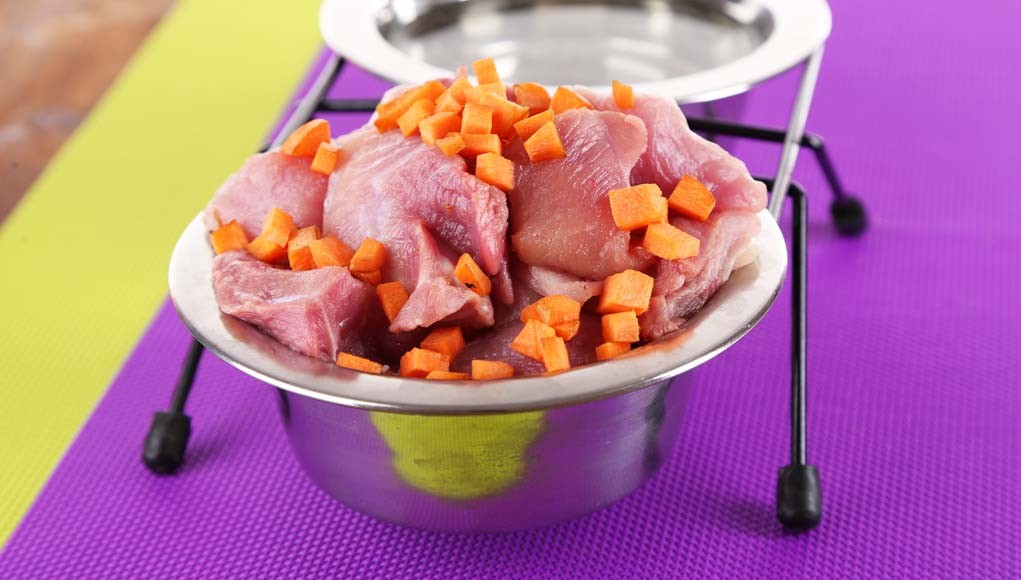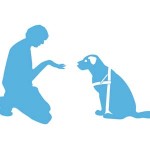
Let's Talk is our new weekly column published where Top Dog Tips editors will bring interesting topics for discussion.
This allows our team a chance to throw around some great tips, tricks, and information that we've all picked up in our years of being dog owners.
Missed our first Let's Talk column? Check it out here!
In this topic, we will talk about the transition to a raw dog food diet, its effects on your pooch, and how to do the switch as properly as you can.
However, our editor has just started the raw dog food transition, and updates are still in progress.
Have you been thinking about switching your dog to a new dog food diet? You may relate well to one of our editors:
“Our family recently lost one of our boxers, Maddie, to lymphoma, and that has gotten me thinking about the importance of the dog foods that we feed our pets.”
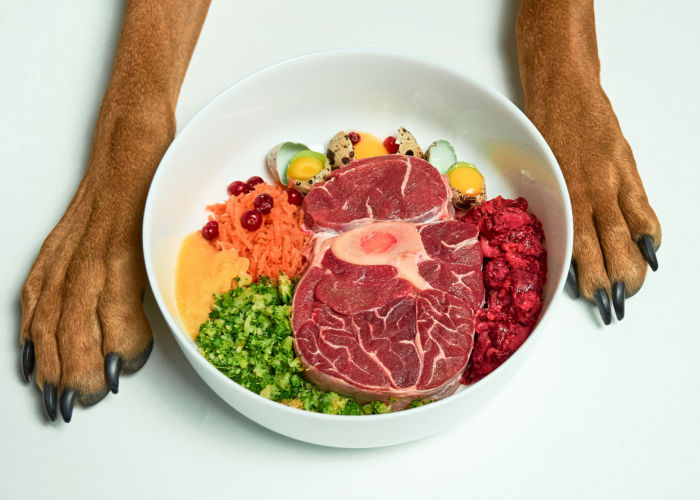
Raw Dog Food Diet: What It Is
A raw dog food diet is exactly what it sounds like—raw meat comprising muscle meat, organ meat, vegetables, and/or bones.
Raw dog food diets could be made at home or bought in the store and can be fed as is, freeze-dried, or dehydrated.
The inspiration for the raw diet for dogs came from what canines eat before domestication—raw meat.
Dr. Ian Billinghurst, a Veterinary Surgeon, and an Animal Nutritionist, first reintroduce the idea of raw food diets for dogs in his 1993 book “Give Your Dog a Bone.”
His raw meat diet theory talks about how a clean, healthy, and natural diet dogs eat could maximize their health and longevity because of the lack of preservatives or additives.
The strong argument in Dr. Billinghurst's raw diet theory led to the development of the BARF diet and the RMBD diet.
What is the B.A.R.F. Diet?
BARF diet could mean two things—Biologically Appropriate Raw Food and Bones And Raw Food.
This abbreviation may have two meanings, but this only refers to raw food diet for dogs. The principle starts with feeding raw dog food that is composed of healthy, raw meat.
The B.A.R.F. diet is not entirely made of meat, but there's a mix of high protein and lesser contents of fat and carbohydrates.
The raw food diet for dogs may include:
- Raw, lean meat
- Bones with meat
- Organ meat
- Fruits and vegetables
- Supplements and vitamins
While the RMBD diet, or the Raw Meat Based Diet, is essentially the same as the BARF diet, where raw food is fed to dogs involving raw meat and organ meats.
Raw Dog Food Diet: Why Dog Owners Make the Switch
When it comes to dog food, there are so many options on the market right now. There are a lot of popular homemade raw dog food recipes floating around as well, so what's the best option?
You should hear the story of our editors on what made her make the switch to a raw food diet for dogs:
“I've had dogs my entire life, and when I was younger, all of our family dogs were fed traditional commercial dog food.
It wasn't the bottom-of-the-barrel cheap stuff, but it was just your average dog food. No special ingredients, and it had fillers, preservatives, and additives, I'm sure.
When I got my first dog on my own, a boxer named Roxy, I began feeding her the same type of dog food.”
Advocates of a raw diet for dogs say their pets have shinier coats and healthier skin.
The dogs' dental health also improved significantly, they become more energetic, and they produce healthy-looking stools.
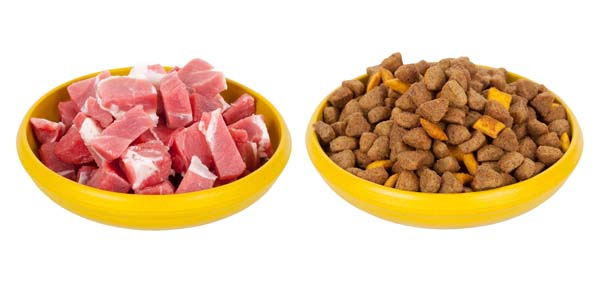
Raw Dog Food: Starting the Healthy Diet Change for Your Dog
Most pet owners would think about starting a healthy diet for their dogs just as they practice it themselves.
You may be aware of the junk foods that people eat and later ruin our health in the long run.
The case is the same when it comes to heavily processed dog food that is packed with preservatives.
Because of this, our editor has decided to give a raw diet for dogs as a healthier option for her pooch.
“This was a few years back when the push for healthier human food was beginning to take off. Everyone was looking for all-natural products, organic foods, and healthier options.
There were constantly articles in the newspaper and segments on the nightly news about certain chemicals causing cancer and other human diseases.
Like many people at the time, I began to slightly change my own diet.
I certainly don't eat healthily and I do eat processed foods from time to time, but I've cut out a lot of the junk that I used to eat, and I began thinking that it may be wise to do the same thing for my dogs.
Now I feed them a higher quality food with no wheat, no corn, and no soy fillers. Real protein is the number one ingredient in their dog food, and I can certainly notice a difference.
They eat less, poop less, their coats are healthier, and they've lost weight.
Until recently, I thought that this food was good enough, but lately, I've been wondering if we should switch to a raw food diet.”
Why Not Choose Healthily, Organic Kibbles Instead of Raw Dog Food?
Dogs descend from wild animals that would not be happy eating a diet consisting of dry kibble and a few dog treats every now and then.
They crave whole foods, vegetables, and nutrients that are not found in most commercial dog food.
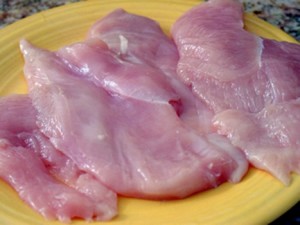
“Yes, I did think about just switching them to an even healthier dry kibble, but if I'm going to spend the money on top-of-the-line dog food, why not just go raw?
I know the risks of salmonella, and I've read about the other risks as well, but it just seems to me that the positive effects of the raw food diet drastically outweigh the risks.
I am a firm believer that it is the toxins, chemicals, and junk in our foods that is leading to the drastic increase in human diseases, and I believe the same to be true for dogs as well.
Going back to a diet rich in fresh fruits, vegetables, and protein seems like the best option to me.
So, like any good dog owner, before I switch to anything new, I do the research.”
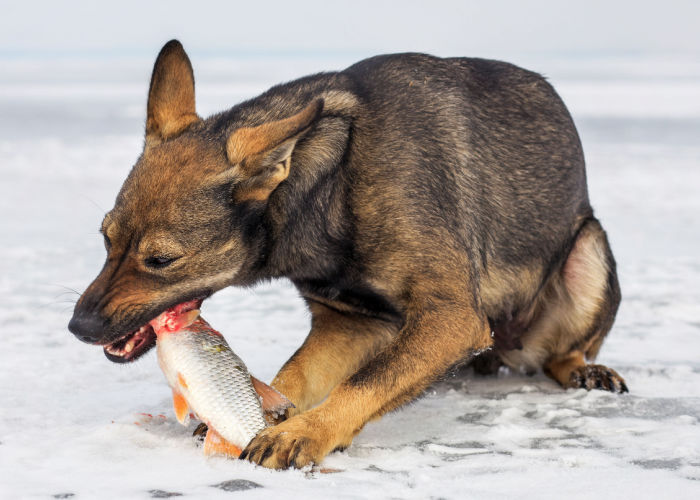
Is Raw Dog Food Healthy and Safe?
That's where it gets tricky.
About the only consistent thing in all the research done on raw food diets for dogs is the overwhelming amount of conflicting information.
Likewise, the raw dog food diet is fairly new in the pet industry.
There isn't a lot of research to back up any of the positive or negative information claimed about the diet.
Dog owners don't want to switch their pet's diets based on an assumption by many leading researchers.
Yes, these people are experts in their field, and they certainly know a lot more about canine nutrition, but it pays to do more research.
You may want to see 100% proven-to-be true facts showing which diet is best for your dog. Unfortunately, that's not going to happen just yet.
All dogs are different, and they all have their own individual dietary needs, so it is up to pet owners to do as much research to select the diet believed will best meet those needs.
Of course, our veterinarians are here to help us with this quest. But with all their advice and expertise, the buying decision still boils down to the dog owners such as yourself.
Benefits of Raw Food Diet
Most pet owners are hesitant about a raw dog food diet for their dogs because of the risk of salmonella. However, there are many benefits of feeding raw dog food.
For instance, starting a raw food diet for dogs will result in:
- Better development of lean muscles (when fed in good proportions)
- More vibrant energy
- Improve the dog's skin and coat
- Cleaner teeth and breath
Aside from the benefits of raw food diet for your dogs, it has a good effect on the environment.
It lessens the amount of food waste, and a raw food diet also prompts less animal waste.
What Happens During the Transition to Raw Food Diet for Dogs
Here's a personal account of our editor, who has started a raw food diet for their dogs:
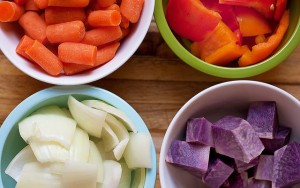
“As I mentioned earlier, we lost one of our boxers a couple of months back.
We have another boxer, Chloe (who you may recognize from last week's column), and she is very lonely.
Boxers are a very social breed who enjoy the companionship of humans and form strong bonds with other dogs.
We have decided to bring a puppy into our family to help Chloe deal with the loss of her sister.
I want to begin feeding a raw food diet when the puppy comes on the first of September.
I will be spending the next three weeks slowly transitioning Chloe to a raw food diet, and by the time the puppy gets here, she should be eating 100% raw.
Due to the excessive amount of dog food recalls in the past few months, I will be making my own homemade dog food.
As I mentioned last week, Chloe has a heart condition, so she will be eating a heart-healthy diet, with most of her protein coming from fish and chicken.
I will use a lot of the same ingredients for the puppy's food, although she will need a differently balanced puppy diet than Chloe.
I'm interested to see how our new puppy does with the diet. I wonder if her overall health will be better than others dogs that we've had that ate commercial dog food.
Chloe is relatively healthy, other than her heart condition, of course, but I'm hoping that the raw food diet will increase her energy level and add to her overall health and well-being as well.”
Is a Raw Dog Food Diet Good for Dogs with Diseases?
Wondering if a raw food diet for dogs could be safe for your pooch? Our editor has a puppy with several previous illnesses that started a raw diet.
“Chloe has had eye infections, urinary tract infections, and digestive health issues in the past.
So, I'm curious to see how she will do on the raw food diet.
I've consulted with our veterinarian extensively on this. She believes that this new diet will be better for both Chloe and our new puppy.
However, she did caution me to make sure that I stick to reputable recipes to make sure that both Chloe and the puppy are getting the nutrients they need.
We've discussed the recommended daily allowances for both dogs. Obviously, while the puppy is young and growing, her food will need to be rich in the nutrients that will help her grow.
Chloe will need a little different diet because she is middle-aged. If you're considering any change in diet, especially to a raw dog food diet, you should consult your vet.
That way, you'll find out the recommended daily allowances for your pet.
One of the biggest risks with this diet is nutritional deficiencies.
I understand the risks of diseases like salmonella and E. coli, but we will make sure our meat is fresh and organic.”
How Much Raw Dog Food Should You Feed?
Before starting a new raw diet for dogs, you need to consult with your vet first. In most cases, it would depend on the dog's weight and age.
Raw dog food is packed with protein and nutrients. But remember that even when you're starting a raw diet for dogs, make sure to keep them hydrated at all times.
How to Feed Raw Dog Food
There are several ways how to feed raw dog food to your pets, but it's important to introduce it to their diet correctly.
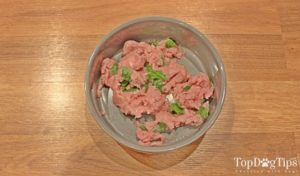
Feeding them all raw food and raw meat when your dog is not used to it yet might not sit well with their stomach.
Experts recommend feeding small raw food little by little.
You can incorporate it into their usual meal, or you can feed your dog a small amount of raw food, like minced meat, in the morning, then feed them their usual meal later that day.
The next day, you can gradually increase the amount of raw meat you feed them. By the third day, your dog should be used to feeding raw food 100%.
Feeding your dog raw food diet in various ways will help to keep your dog at it. Luckily, there are a lot of raw meal combinations you can do to keep it fun and exciting for your pooch!
Homemade Raw Diets for Dogs
As we mentioned, variety is key in feeding raw meat diet to your pooch, so here are a couple of food combinations you can try that will not only provide balanced nutrition to your dog but won't break the bank, too!
- Chicken (muscle meat, organ meat, ground bone) and carrots
- Beef (ground muscle meat, organ meat such as liver and heart, tail bones) and green fruits and vegetables
- Turkey (muscle meat from thighs, breast, or tenderloin, and organ meats like heart and liver) and sweet potato for complex carbohydrate and fiber
Chicken, turkey, and beef are among the healthiest biologically appropriate raw food for dogs, so making sure they load up on these are key to successful raw dog food diets.
Other raw food options you can consider are:
- raw meaty bones
- raw eggs
- vegetables like broccoli, spinach, celery, etc.
- fruits like apples, blueberries, cantaloupes, etc.
- Dairy like yogurt
You can also add other ingredients like seeds (hemp, sunflower, chia, etc.,) herbs (oregano, curly-leaf parsley, rosemary, etc.,) and other supplements like fish oil, glucosamine, and probiotics.
Check out our other recipe recommendations for feeding raw food to your dog.
RELATED: 7 Best Raw Dog Food Recipes
Dehydrated Raw Dog Food is Great On-the-Go
Another dog raw food preparation you can do is dehydrate them!
It offers all the nutritional benefits of raw feeding without the hassle of defrosting the meat.
Plus, if you and your furry champ are constantly on the road hiking or camping, you can just pack these up and go!
When properly stored, dehydrated raw dog food can last up to 3 months, too, so no reason to worry about spoilage.
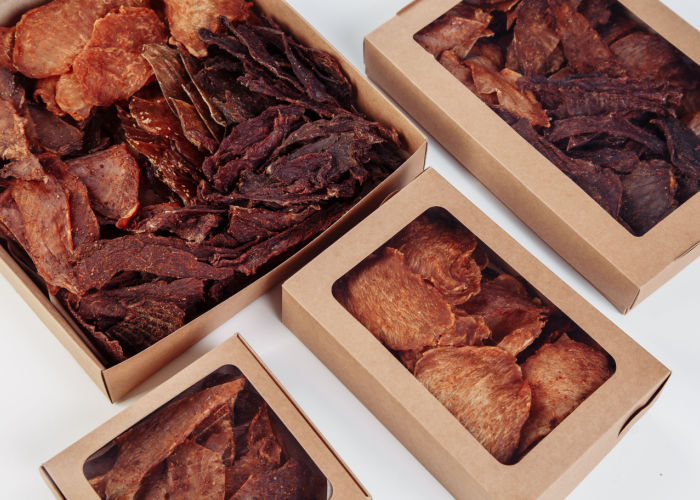
Freeze-dried Raw Food Diets for Dogs
Raw feeding dogs are a lot like feeding them dehydrated raw food.
Same with dehydrated ones, frozen raw food diets also draw out moisture from the meat, albeit better. It can remove 98 to 99% of moisture, while dehydration can do as much as 95%.
If there is a need to rehydrate the food, freeze-dried ones can do so in 2 to 3 minutes, while dehydrated raw food might require a couple more minutes or hours.
Safety Tips for Feeding Dogs Raw Diets
The tricky part about feeding our dogs a raw diet is making sure they're safe and free from germs like Salmonella and Listeria that might cause them illnesses like food poisoning.
Remember that, unlike homemade cooked meals for dogs, raw food diets do not use heat to kill germs.
Proper handling is key in making sure you feed safe dog raw food to your pooch.
Here are a couple of safety tips to help you get started:
- Clean your house and kitchen often
- Wash your hands before and after handling raw dog's food
- Properly store or chill raw pet food that needs to be stored
- Throw away any thawed leftover foods that were kept at room temperature for a long time
- Disinfect the food bowl as frequently as possible
Potential Risks Of Raw Dog Food Diet
There are, of course, risks associated with a raw diet, not only to dogs but to humans, too.
The number one thing you should avoid at all costs is contamination.
When not handled properly, the germs that cause food poisoning can also affect you and your family.
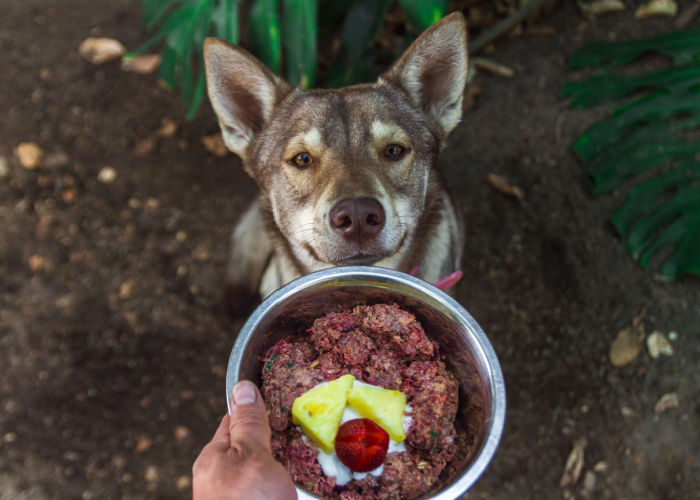
FAQs on Raw Dog Food Diet
A lot of dog owners are interested in making the switch for their pooch to a raw meat diet, but not without questions.
Here are the commonly asked questions that might answer yours too!
Can puppies eat raw dog food?
Yes, puppies can eat raw dog food! Actually, they can start eating raw dog food as soon as they hit 4 weeks old.
Once your puppies hit 6 months, you can also give them raw meaty bones. These help with their teething stage and keeps them occupied too!
Just make sure that someone is monitoring them while they're chewing to avoid unwanted accidents like choking.
Do dogs live longer on a raw diet?
According to a study conducted by Belgian researchers Dr. Gerard Lippert and Bruno Sapy, feeding your dogs with a raw diet can increase their lifespan by as much as 32 months—almost 3 years!
Do dogs poop less on a raw diet?
Yes, dogs on a raw diet actually poop less.
This is because their bodies absorb more nutrients and digest more ingredients from unprocessed raw meat and other food.
That's why they produce less fecal matter.
Raw Dog Food Diet: Making the First Step!
Have you been thinking about switching your pooch to a raw dog food diet?
Despite the controversial information and hesitations, you'd be surprised at the benefits of a raw food diet for dogs.
The best thing about a raw diet for dogs is that you can choose different versions. For instance, you can opt for freeze-dried dog food that has raw ingredients.
Your dog will develop leaner muscles given the high protein and fewer carbohydrate contents of raw dog food.
It's also organic, so you don't have to worry about preservatives or heavily processed meat ingredients.
What are your thoughts on raw dog food diets? Do you have any experiences to share? Any tips, pros, and cons of using a raw dog food diet with your own pooch? Let me know, and let's talk!


